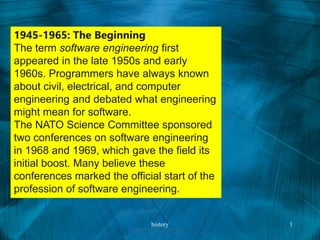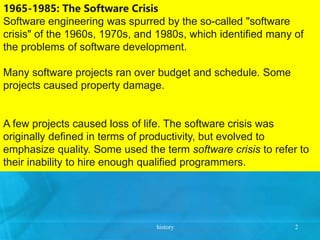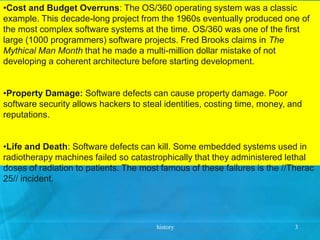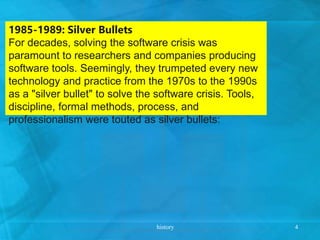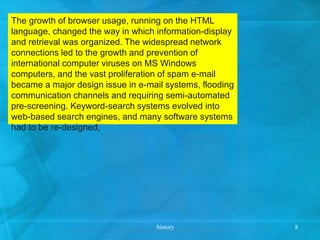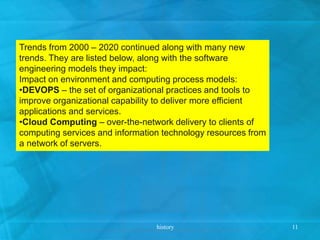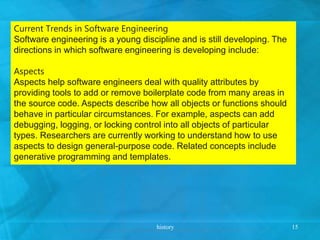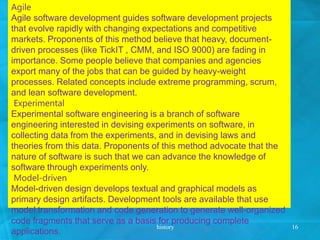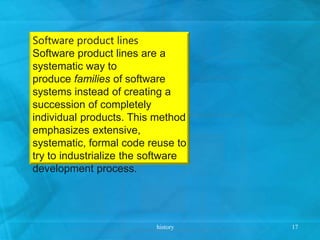The history of software engineering spans from its formal introduction in the late 1950s to contemporary developments characterized by rapid technological advancements. Initially shaped by the 'software crisis' of the 1960s to 1980s, the field has evolved through various phases, including the rise of the internet and current trends such as DevOps and agile methodologies. Ongoing research addresses how to enhance software quality and efficiency, reflecting the discipline's continued growth and adaptation.
